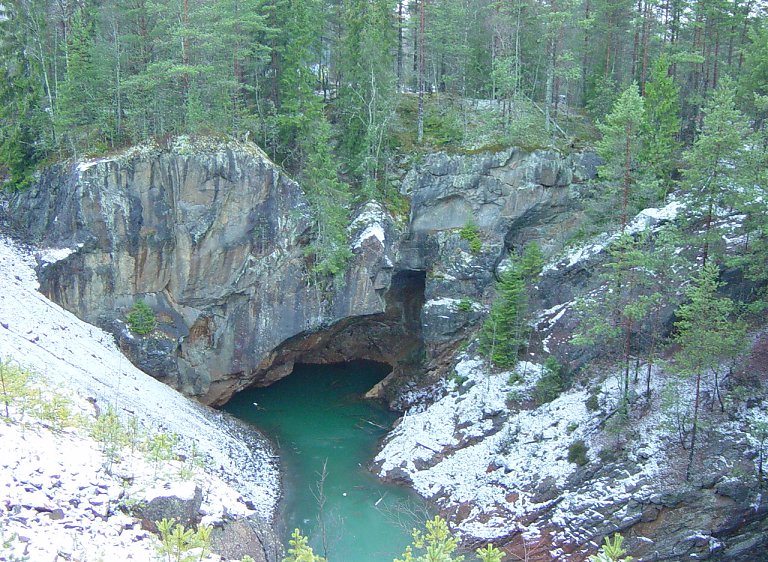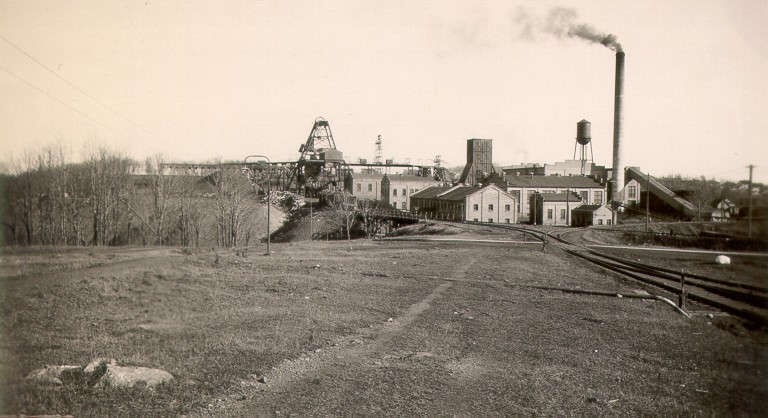MÅRTEN NILSSON FINNE
Spring was somewhat late in 1624 in the south of Sweden, but the snow was now gone and the trees were just beginning to bud. It was a wonderful spring day and Mårten Nilsson Finne had traveled up from Ramsberg to Ljusnarsberg, where he had done a lot of fishing over the years. He walked along toward Lake Ljusnarn, looking forward to a full day by the water. Sharing the rather small cottage at Loa that he purchased 8 years ago, with his wife Kerstin and his eight children had worn on him. The long, cold, dark winter had kept them indoors much of the time and he now enjoyed being outdoors and alone for a while.
As Mårten walked along, he thought about his children. Erik, Mats, Anna and Olof, the older four, were maturing rapidly. The boys, individually, were a big help with the chores, but at that age they had to be kept separated. As he had said many times, “One boy is half a man, but two or more boys add up to no man at all!” Still, he was proud and happy to have 6 sons – surely one or more of them will stay in Löa and be able to take care of Mårten and Kerstin when they get old!
Erik was beginning to spend more and more time away from home. The neighbor’s daughter Elin seemed to have caught his eye. Anna was becoming a nice looking young lady. At church on Easter Mårten noted that some of the young men were beginning to look her way.
The four younger children, Kerstin, Lars, Johan, and “baby” Halsten were also growing up nicely. Kerstin and Johan were somewhat quiet and withdrawn, but Lars and Halsten were confident and outgoing.
Mårten noted that the rivers were much lower than they had been last time he was here and, as usual, they had washed away some new areas during the spring thaw. Portions of the path were eroded and he had to walk carefully. He was almost 50 years old and he felt every year of it.
The sun was bright and came through the budding trees nearly unimpeded. Water had carried away a lot of dirt from the base of a 25 alnar (15 meter) cliff just off Mårten’s path and as he approached it he caught a glint from the newly exposed stone. Always curious, Mårten went out of his way to explore.
The stone at the base of the cliff had some definite shiny spots but it also had a greenish black tinge. Mårten’s eyesight was failing and although he knew about copper ore from his experience working in Falun, Kopparberg, he just wasn’t sure what he was seeing here. Using the hatchet he always carried in the woods, Mårten dislodged and collected a few samples, identified some nearby landmarks so he knew exactly where he was, and went on his way to the lake.
A few days later Mårten took his stone samples and rode over to visit his friend Jacob Urbansson. Jacob was an old, experienced prospector. Mårten enjoyed talking with his old friends. He was fluent in Finnish from his youth in Torneå, Finland, where he was born. Since leaving Finland and moving to Sweden he learned to speak passable Swedish and also knew a bit of French, which he had picked up from Louis de Geer and other Walloons he knew in the mining industry.
Jacob was considered to be a “ruthengängern”, a person capable of dowsing for valuable minerals. He recognized the samples immediately as copper ore. The two men investigated further and confirmed that the find was a significant lode of copper ore! In 1613, Jacob had discovered a lode of copper ore near Salbo but he didn’t pursue it. Now, with this new discovery, the powerful Louis de Geer became interested in the area and acquired leases on large tracts.
By 1628, subsidized by Louis de Geer, Mårten and Jacob began mining copper ore. Simultaneously, they constructed a smeltery which became known as Ljusnarns Kopparverk. To encourage the new endeavor, in 1630 the smeltery was granted six years operation free from taxes.
Mårten’s discovery in 1624 brought about major changes in Ljusnarsberg. The focus shifted from settlement and cultivation to mining. The population grew as more men were needed to run the mines and the smeltery. Word got out of the new discovery, causing a “finninvasion”, an influx of Finns interested in mining.
The mine that resulted from Mårten’s discovery became known as Storgruven (“Big Mine” in English). Storgruven produced copper ore steadily at first and in later years periodically, from 1628 until 1975, when it was finally closed!
Mårten was involved with the mine and the smeltery, but with his eyesight continuing to fail, he was less and less able to participate. He faded from the scene and was somewhat forgotten by the administration of mining activities. Years later a survey was conducted by local researchers to identify all Finns in Löa, and Mårten was rediscovered. In 1642 he was listed as “blind Mårten from Löa”. In 1647, by special decision of the Bergslaget (mine organization), Mårten was awarded 2 tunnor (barrels) of grain as reward for his discovery and as emergency assistance.
In 1627, Mårten’s son Erik married Elin and stayed in Löa, and his daughter Anna married Nils Olsson and moved away. In 1633, “baby” Halsten married Gertrud, both at a very young age, and they moved to Nederhyttan. In 1643, Olof married another Elin and they stayed in Löa. In 1647 Lars married Anna Nilsdotter and they moved to Hakansbo.
Mårten Nilsson from Finland died before 1650 at about 75 years of age.

“Storgruvan, Kopparberg
Foto: Jan Kruse 2003-11-22
Storgruvan i Kopparberg upptäcktes av Mårten Finne på 1620-talet. Gruvbrytning
skedde periodvis fram till 1975.”
http://www.k1q.net/skarn/picture.phtml?function=view&id=528
THE FACTS
Mårten originated in Torneå, Finland. He was born in 1575. He moved from Finland to Sweden and worked for some years in Kopparberg county, Falun parish. He married Kerstin and they had at least 8 children from 1596 through 1616.
On 1616-05-22 he bought a homestead in a community called Löa, in Ramsberg parish, Örebro County. Mårten traded for the home with 5 ½ barrelsful of Osmund’s iron (small iron ingots) “in full payment with nothing further owed”.
Soon after his discovery of copper, Mårten suffered the loss of his eyesight.
In 1646 he is listed as old and blind.
In 1647 (23 years after discovering copper) the Bergslaget (mine organization) awarded Mårten two barrels of grain. This is the last known documented reference to Mårten. He is believed to have died before 1650 at about 75 years of age.
Mårten Nilsson Finne and Kerstin were the author’s ninth-great grandparents. Using the shorthand common to genealogists, Mårten was my FFFMFMMFFFF (father’s father’s ……….. mother’s ……….. father’s father). Halsten Mårtensson (Mårten’s youngest child) was my eighth-great grandfather.
The facts in this story are documented in Swedish sources. The details describe how the events might have happened. Except where given in full, dates are approximate.
EPILOGUE
Spring was somewhat late in 1924 in the Upper Peninsula of Michigan, but the snow was now gone and the trees were just beginning to bud. It was a wonderful spring day and Charles Eric Sandin was on his way to work. He walked along toward the Anvil Mine, looking forward to greeting his crew and organizing them for the day’s work…………..
But that’s another story.

The Anvil Mine in about 1940
Charlie was born and raised in Sweden just a mile south of Lake Ljusnarn, where Mårten went to fish that fateful day in 1624. He migrated from Sweden to the United States in 1891. He went to work in the iron mines of Northern Michigan and was the surface boss (foreman) for the mine in Anvil Location near Bessemer, MI in 1924.
Charlie was Mårten’s seventh-great grandson and he was my grandfather. Do you suppose the human genome has a “mining gene”?
[Visitor number
]